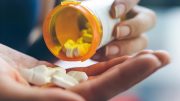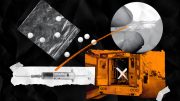
Research indicates a 30% surge in stimulant use during the school year, with the most significant increase observed among children from socioeconomically advantaged families.
New research from Yale, NYU, and the University of Wisconsin-Madison shows that students are 30% more likely to take a stimulant medication during the school year than they are to take one during the summer.
The authors found that school-year increases in stimulant use are the largest for children from socioeconomically advantaged families. Because many children use stimulants only during the school year and take a “drug holiday” in the summer, the authors conclude that these children are using stimulants to manage their schools’ academic demands.
Stimulant medications, which improve concentration and help manage other symptoms associated with attention-deficit hyperactivity disorder (ADHD), are the most widely used class of medications among adolescents. Children’s use of these medications in the United States has increased dramatically in the last two decades, from approximately 2.4% of children in 1996 to 6% of children at present.
Larger school-year increases in stimulant use were found in states with higher levels of accountability pressure, suggesting that education policies impact stimulant use. Children from families who are not poor and live in states with more strict standardized-testing and school-accountability environments are much more likely to use stimulants only during the school year compared to their less economically advantaged peers in states with less stringent accountability environments.
“Many parents are faced with a tough decision: Do they medicate their kids to help them manage in an increasingly demanding school environment?” said Marissa King, assistant professor of organizational behavior at the Yale School of Management and lead author of the study. “Rather than trying to make kids conform to the school system by taking stimulants, we need to take a closer look at what is happening in schools.”
To examine the effect of schooling on stimulant use, King and her colleagues analyzed a data set including the majority of prescriptions written for stimulants in the United States during the 2007-2008 academic year. They linked the patterns of stimulant use during the school year to academic pressure by analyzing state rankings of school-accountability policies published by Education Week. Differences in school year and summer use could not be explained by avoidance of medication side effects, medication cost, or type of ADHD.
The researchers also examined the influence of doctors on school-based stimulant use to determine whether the socioeconomic differences they observe occur because more- and less-advantaged children see different doctors. Even when children from more- and less-advantaged backgrounds were treated by the same doctor, children from more-advantaged backgrounds were more likely to use stimulants only during the school year. This suggests that socioeconomic differences in school-based stimulant use are driven by parents, not doctors. “Socioeconomically advantaged families are more likely to trust their own judgment about medication decisions rather than defer to their doctors,” said King.
The researchers say that the study suggests that medical interventions like stimulant use may be a new pathway through which more advantaged parents translate their economic advantages into educational advantages for their children, either intentionally or unwittingly.
“Medical Adaptation to Academic Pressure: Schooling, Stimulant Use, and Socioeconomic Status,” by Marissa King (Yale School of Management), Jennifer Jennings (New York University), and Jason Fletcher (University of Wisconsin-Madison), is published in the American Sociological Review.
Reference: “Medical Adaptation to Academic Pressure: Schooling, Stimulant Use, and Socioeconomic Status” by Marissa D. King, Jennifer Jennings and Jason M. Fletcher, 13 October 2014, Sage Journals.
DOI: 10.1177/0003122414553657
PDF









Be the first to comment on "Study Finds Stimulant Use Increases by 30% During the School Year"